I recently shot a roll of Cinestill 50D in 35mm and figured I would share my experience.
Note: all photos in this post were shot on my Leica M3 with my Zeiss 50mm f/2 Planar T* lens.
Some backstory
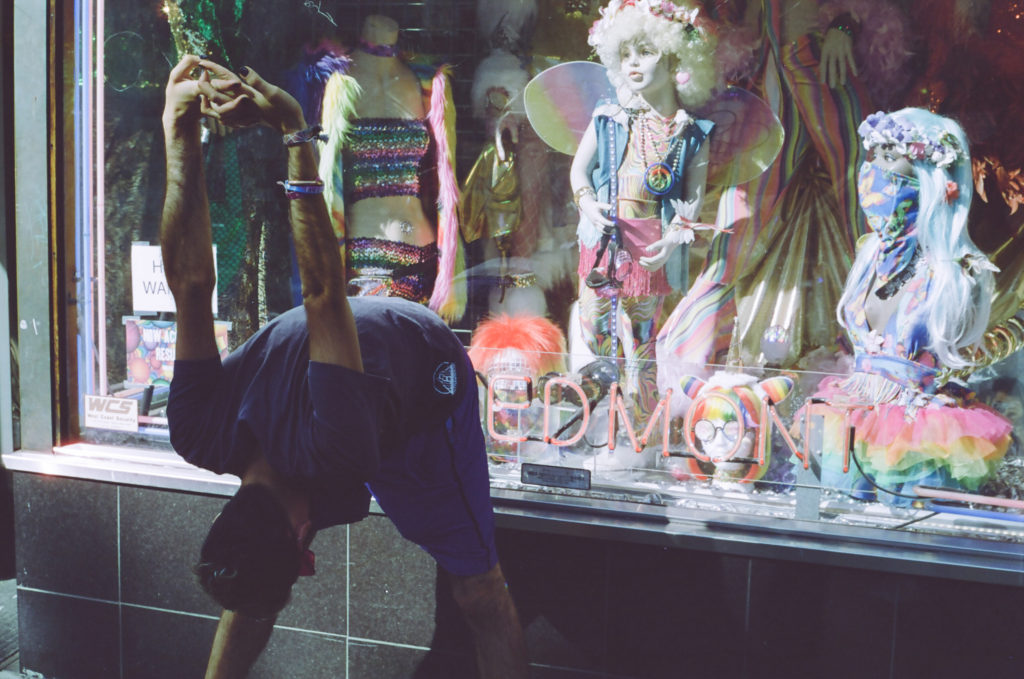
If you’ve been experimenting with different film stocks, there’s a good chance you’ve heard of Cinestill. They’ve been making waves in the film community lately with their new film stock, which is essentially based off Kodak motion picture film, only adjusted so that it can be used for still photography and developed using traditional color negative processes. They currently have two main product lines – the 800T, which is balanced for Tungsten lighting, and the 50D, which is balanced for daylight lighting. Both are available in 35mm and 120mm formats. Cinestill claims “unrivaled shadow and highlight latitude” and (for their 50D) “the world’s finest grain film”.
I took a roll of the 50D out for some street shooting in the Haight-Ashbury neighborhood in San Francisco.
A green tint?
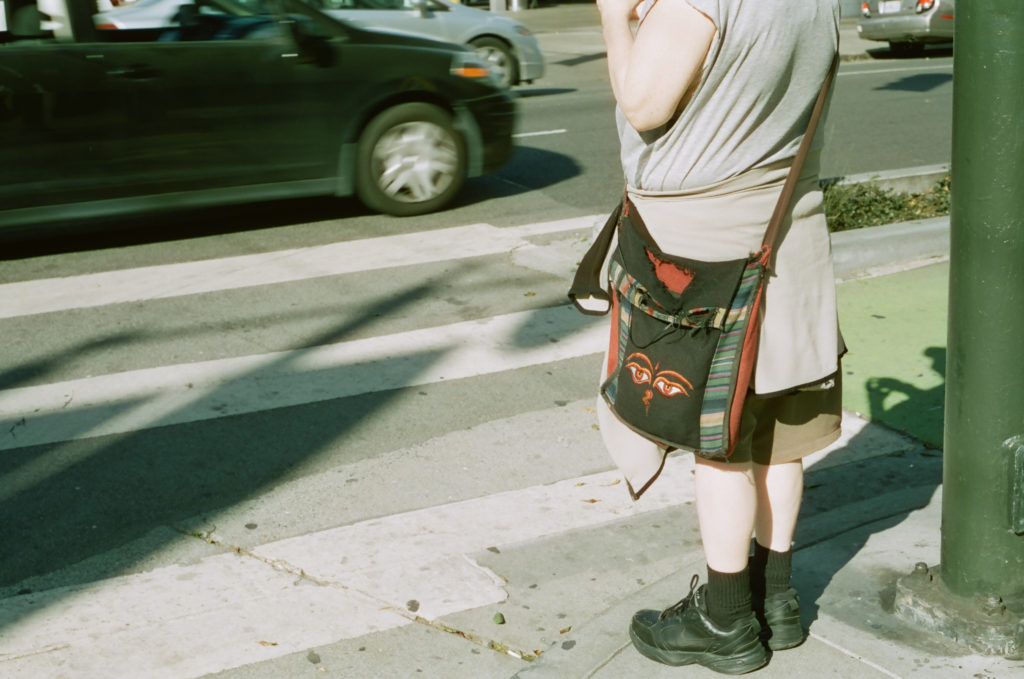
A quick note before getting into the bulk of the review. When I got my scans back from the lab, the first thing I noticed was that every photo had an aggressive green tint. I searched online and couldn’t find other photographers reporting a similar issue, so it’s possible that the lab I used didn’t develop or scan it correctly. It was nothing that bumping the tint slider in Lightroom couldn’t fix, but worth calling out in case other photographers experience a similar issue. The above image shows an example as scanned by the lab, with no adjustments done by me. All other images in the post have had their tint adjusted.
My takeaways
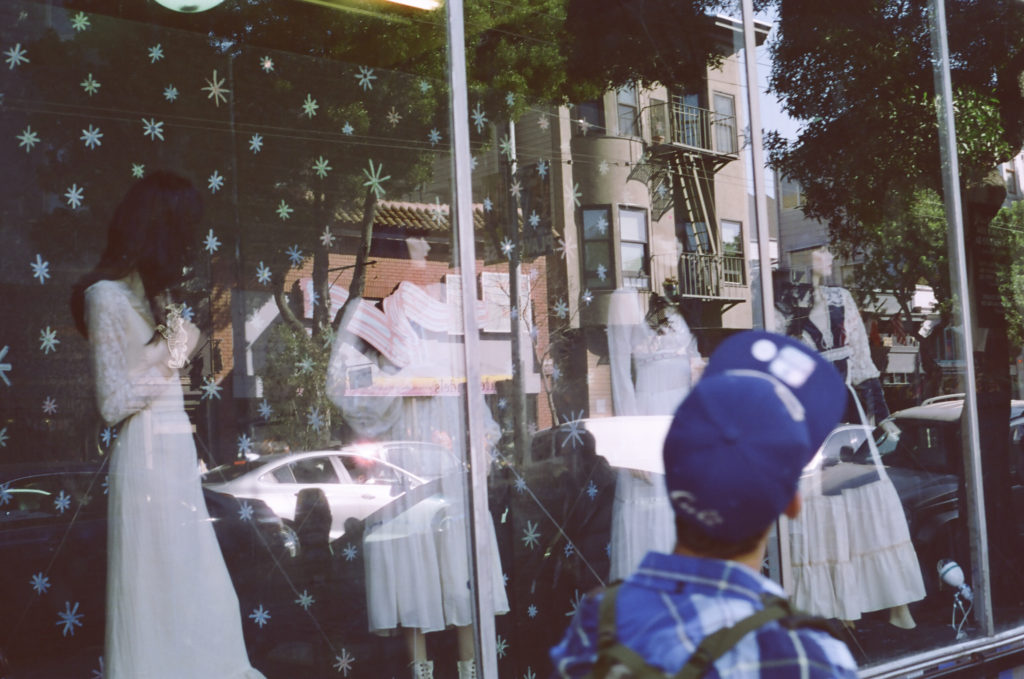
It’s definitely fine grain. I can’t vouch for it being the world’s finest grain, but you pretty much can’t see much grain at all. In fairness, this is somewhat expected for an ISO 50 film.
It has great exposure latitude. Also as advertised, it preserves both shadow and highlight detail quite well. I was shooting on an extremely bright day, with quite contrasty scenes and lots of strong direct sunlight and shadows, and the film handled it all pretty well.
I can’t stand the halation effect. This is part of Cinestill’s signature look – a consequence of the way they’ve treated the motion picture film stock. For reflective objects in strong direct sunlight, there is a “halation effect” a strong glow around the brightest, most reflective parts. I realize some photographers adore this effect and use Cinestill for specifically this reason, but I personally find it very distracting. I also dislike that it creates a possibility that the final image isn’t a representation of what I saw when I took the photo. It’s possible you can avoid it by shooting in less strong, not as direct sunlight – but that seems to contradict the point of an ISO 50 film.
ISO 50 isn’t great for street photography. This isn’t a knock on Cinestill in particular, but a takeaway in general. This was actually my first time using ISO 50 for street shooting, and it was tough. I try as much as possible to stay above f/8 to give myself a deeper depth of field, but with ISO 50, your shutter speeds will be limited.
Conclusion

I probably would not shoot Cinestill 50D again, due to the halation effect and the slow film speed.
Having said that, I might still try out the 50D in 120mm, just to see what happens (and maybe figure out what’s going on with the green tint). I’ve heard that the 120mm format has slightly less pronounced halation effects. I also haven’t given the 800T a proper whirl yet either.
Ultimately, even though I’m not totally sold on the product, I have to admit it’s pretty cool that there’s a company like Cinestill putting out new film stocks in the year 2017.
More photos
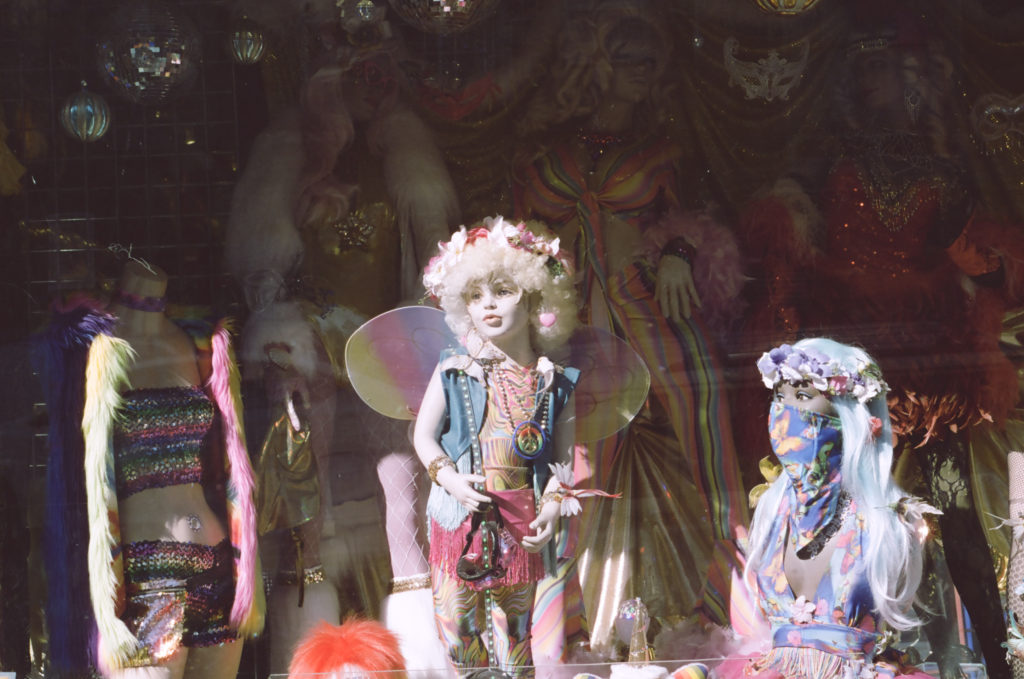
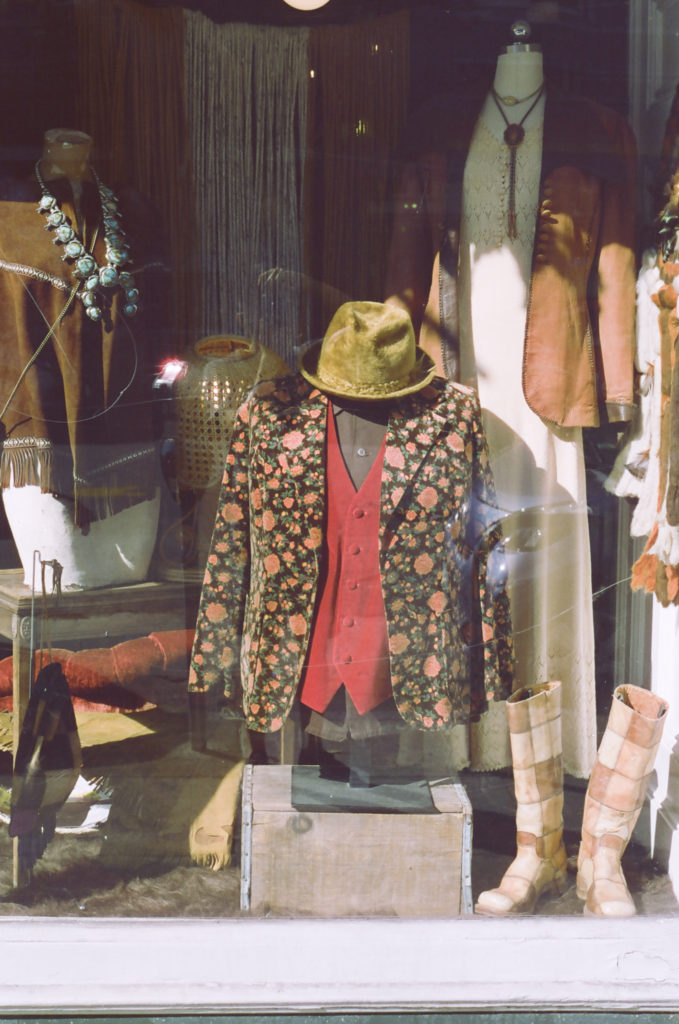
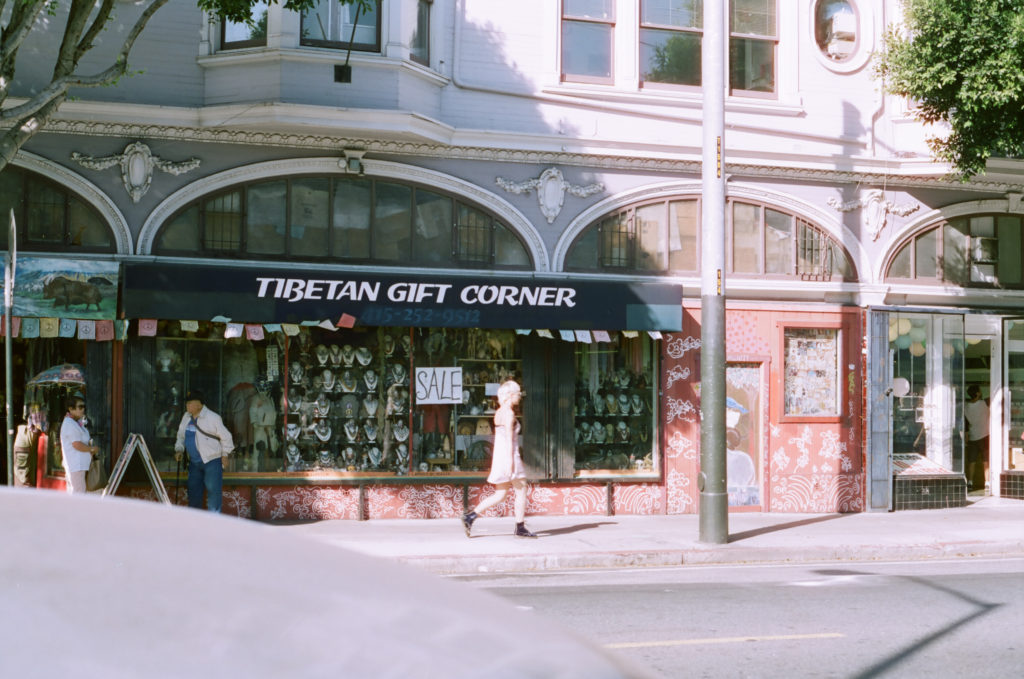
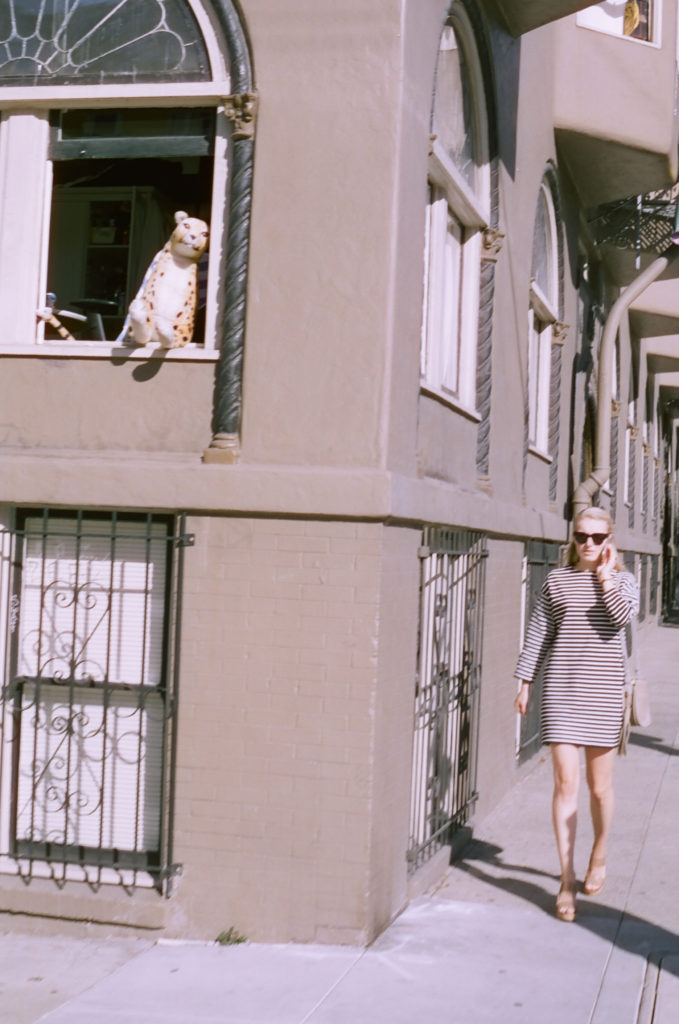
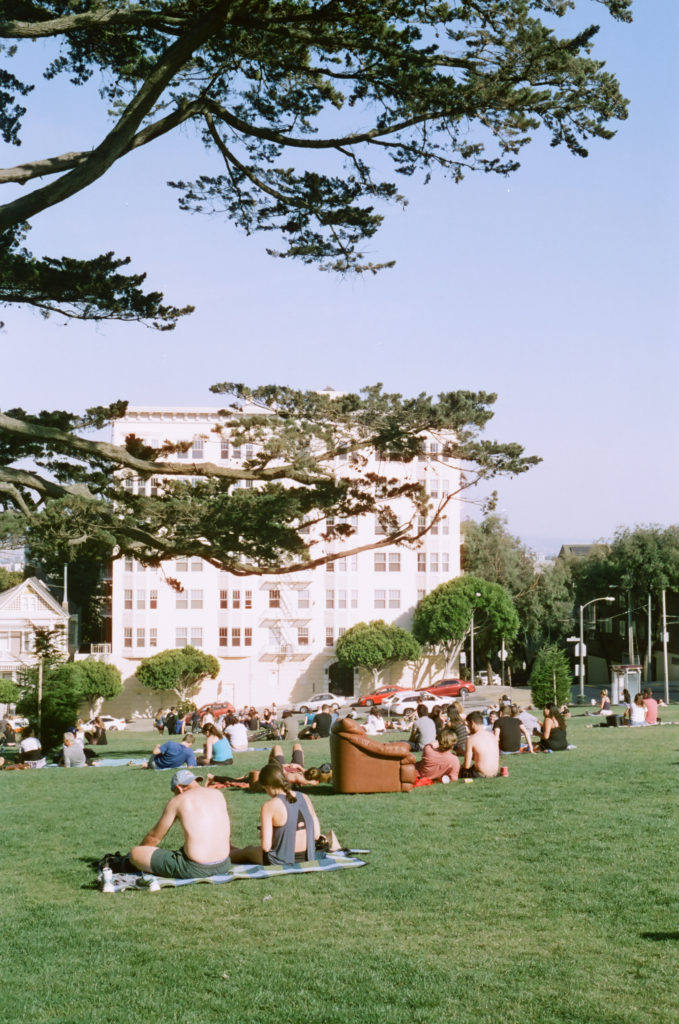
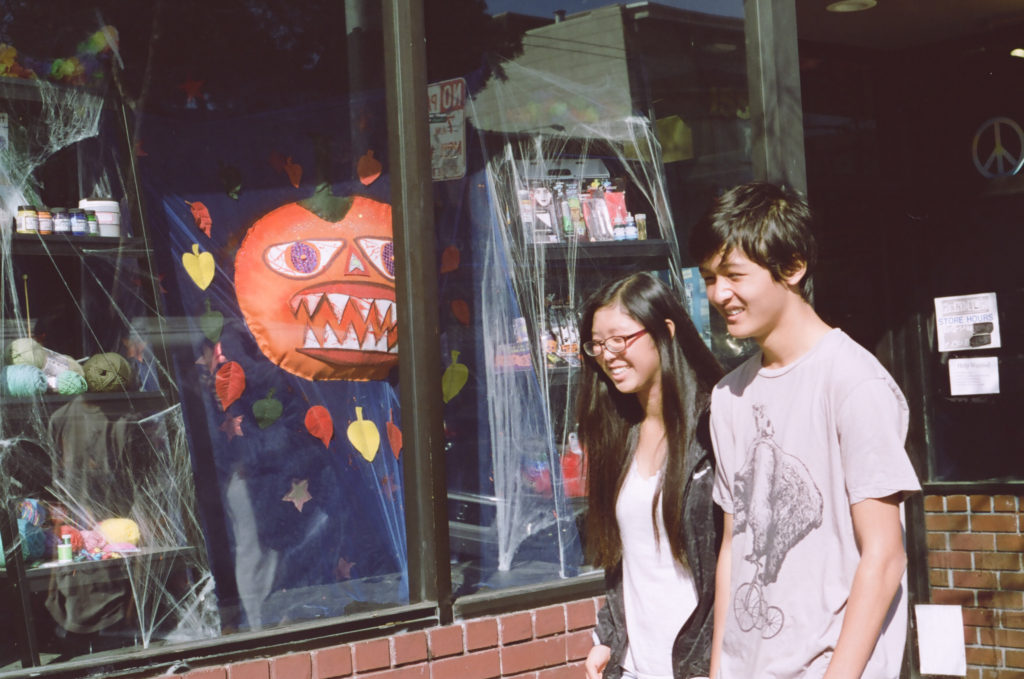
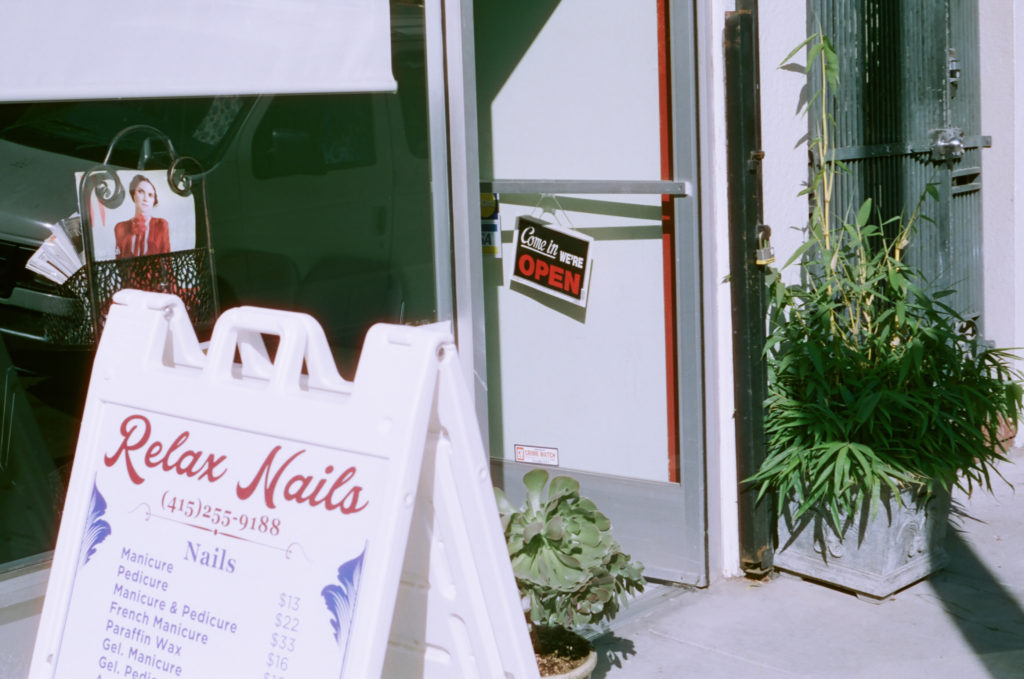
I’ve only shot one roll of 50D and agree that it’s an acquired taste. My shots also went to green, but like you’ve said it’s not hard to fix in post. I find Cinestill 800T to be much more usable than the 50D though if I’m outdoors I’ll probably be using Kodak Gold 200.
Hi Hamilton.
In the midst of my first edit on a roll of 50D which I self processed. Also had the same green hue issues but not in the photos taken in blaring sun.
This really is a pure sunlight film I think!